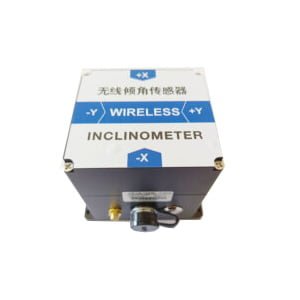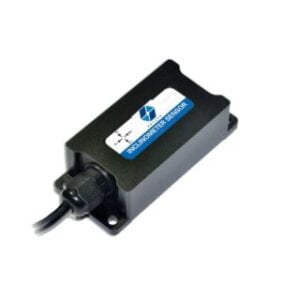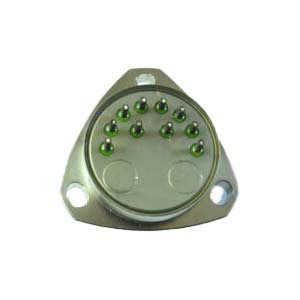A tilt sensor, or tilt switch, is a device used for measuring the tilt of an object in multiple axes with reference to an absolute level plane. They are small and compact instruments which make them a viable option for many applications where orientation or inclination detection is a key factor, such as warning systems on construction or agricultural vehicles. As a testing tool, it has become an indispensable and important measuring tool in bridge construction, railway laying, civil engineering, oil drilling, aviation and navigation, industrial automation, intelligent platform, mechanical processing and other fields.
Tilt sensors work by detecting changes in angle from a pre-set “zero” state. They are set with a maximum and minimum threshold in which the application will work or be safe to operate based on the specific application’s needs. If the tilt or inclination exceeds these threshold values in either direction, a relay will be engaged and the switch closed, thus sending an operation to an external device such as an alarm or warning light to indicate unsafe or non-working conditions. ER-TS-12200-Modbus high precision wireless transmission tilt sensor meets the above environmental conditions, is a wireless inclination sensor with ultra-low power consumption, small size and high performance, which is aimed at the industrial application of users without power supply or real-time dynamic measurement of object attitude angle. Powered by lithium battery, based on Internet of things technology Bluetooth and ZigBee (optional) wireless transmission technology, all internal circuits have been optimized and designed, and various measures such as industrial MCU, three proof PCB board, imported cable, wide temperature metal shell are adopted to improve the industrial level of the product. With good long-term stability and small zero drift, it can automatically enter the low-power sleep mode, so as to get rid of the dependence on the use environment.
Key applications include
Bank angle warning system for ride-on lawn mowers
Safety cut-out for cranes with hydraulic levelling
Tilt warning system for platform and hoist levelling
Rollover warning system for agricultural vehicles
Safety cut-out for aerial work platforms
Other types of tilt switches
You may see many tilt switches today labelled as “non-mercury”. This is because tilt switches in the past, and some today, operate by opening and closing the switch using a small piece of mercury to close the circuit. Depending on the angle and direction of tilt, the bead of mercury comes into contact with an electrode on one end which would determine when it is at an angle exceeding the threshold.
Tilt ball switches are now more commonly used as an alternative to mercury ones, using a metallic ball to act as the mechanism which either opens or closes the circuit. Again, this is dependent on the angle and direction of tilt and therefore location of the ball. Ball switches are now much more common that mercury ones due to their safety and non-toxicity, but they have significant drawbacks such as a lack of noise filtering that means they cannot be used in high-vibration applications. ER-TS-02 is produced based on the above principles, is a single-axis single-channel digital DIP switch with high-performance voltage output, and its measurement range is 0~±180°. When the inclination value is greater than the preset value, the alarm threshold will output the error contact relay signal (driving current 1A), and open the solenoid valve for corresponding hydraulic leg leveling. It is worth noting that the alarm threshold has been calibrated at the factory, and the operator can also set it by himself.
The product integrates an imported core unit, and uses a transistor output circuit to drive a solenoid valve to close the hydraulic system, buzzer, and warning light. The product is used in industries related to horizontal security alarm and platform level monitoring. It can automatically warn workers of safe construction, product design accuracy, temperature and linear compensation, and integrate comprehensive protection functions such as short circuit, instantaneous high voltage, polarity, and surge, which is suitable for various harsh industrial environments.
MEMS sensor switches have many benefits over these other types of tilt sensors. They are far more precise and reliable, as well as having an adjustable trip angle threshold. They also have the functionality to filter noise out for more heavy-duty applications.
More Technical Questions
1.The Difference between Tilt Sensor and Gyro Sensor
3.How to Use the Tilt Sensor and How to Install It?
4.How to install the tilt sensor?
5.Do you Know the Working Principle of Inclinometer ?
6.Accelerometer, Gyroscope and Magnetometer
Products in Article







